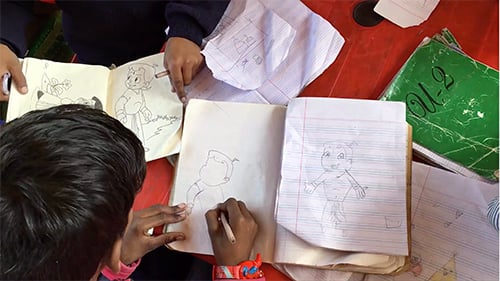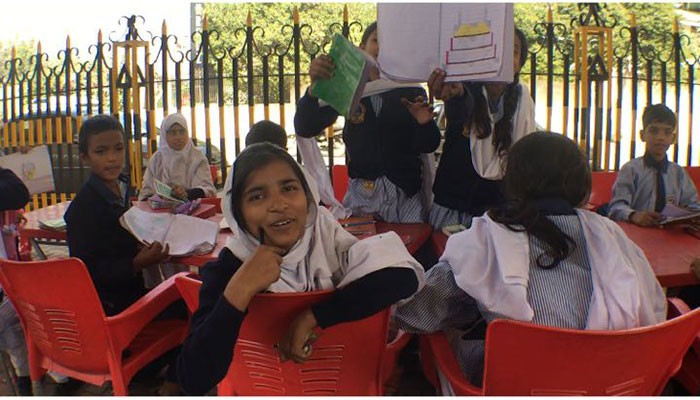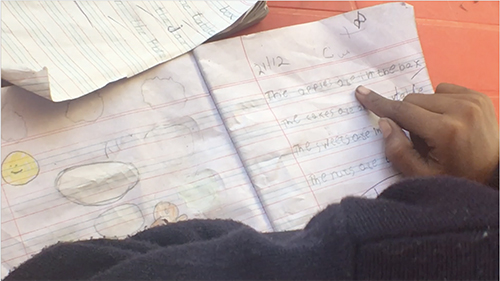Every day at 6:00 AM a footpath near the Abdullah Shah Ghazi shrine, converts into a school—with red tables and chairs, students and teachers, microphone and blackboards, pencils and books. As the sun sets—the students disperse, teachers go home, and the table and chairs get packed into trucks—only to return a day later.
The Footpath School— is a unique idea to teach street children in their comfort zones—the menacing streets where they otherwise spend the day selling goods and services—and often getting shelter through gangs involved in crime and drugs.

Asniha, 13, worked with her mother in a nearby bungalow. She would sweep floors. Now she is one of the brightest students at the Footpath School.
“Every day on my way to work I saw these children study. I asked my mother to place me in the school. And she did. I don’t want to go back to the bungalow now. I want to study. I want to become a doctor,” Anisha said.
Sameer Ali eked out a living by selling shopping bags at the nearby Abdullah Shah Ghazi shrine. When night fell he slept there. Now he spends his time doing Math and English at school. “I sell my shopping bags after school,” he says.
The school has changed many such lives. Children have gotten off drugs. Given up pickpocketing. They have learnt to dream big.
The woman behind the initiative is Anfas Alisha. Once she had a construction business. Not anymore. “Business took a setback. Now all my time is spent with these children,” she says.

She says the Army Public School attack in 2014 deeply affected her. “I thought I needed to get out of my house and do something.”
She started with placing a mat underneath the Clifton bridge, and teaching street children. She was surprised, contrary to popular belief so many of them wanted to study.
Her students increased. The mats were replaced by tables and chairs. She hired teachers, a guard and helpers. Black boards and mircrophones. Her students’ tattered clothes were replaced by crisp blue and white uniforms.
1.2 million on the streets
An estimated 1.2 million children are on the streets of Pakistan’s major cities and urban centers constituting the country’s largest and one of the most ostracized social groups, a 2012 study titled ‘Surviving the Streets’ by Society for Protection of Child Rights (Sparc) points out.

Most such children are between the ages of 9 to 15 years, it adds, and earn a monthly income of Rs 4,000 a month.
The term ‘street children’ include children who either spend the night on the streets, or those who earn a living on the streets and then return to their families in the night.
Educated estimates suggest 25 million children in Pakistan are out of school, education advocacy campaign Alif Ailaan states.
This story was originally published in January 2017.


